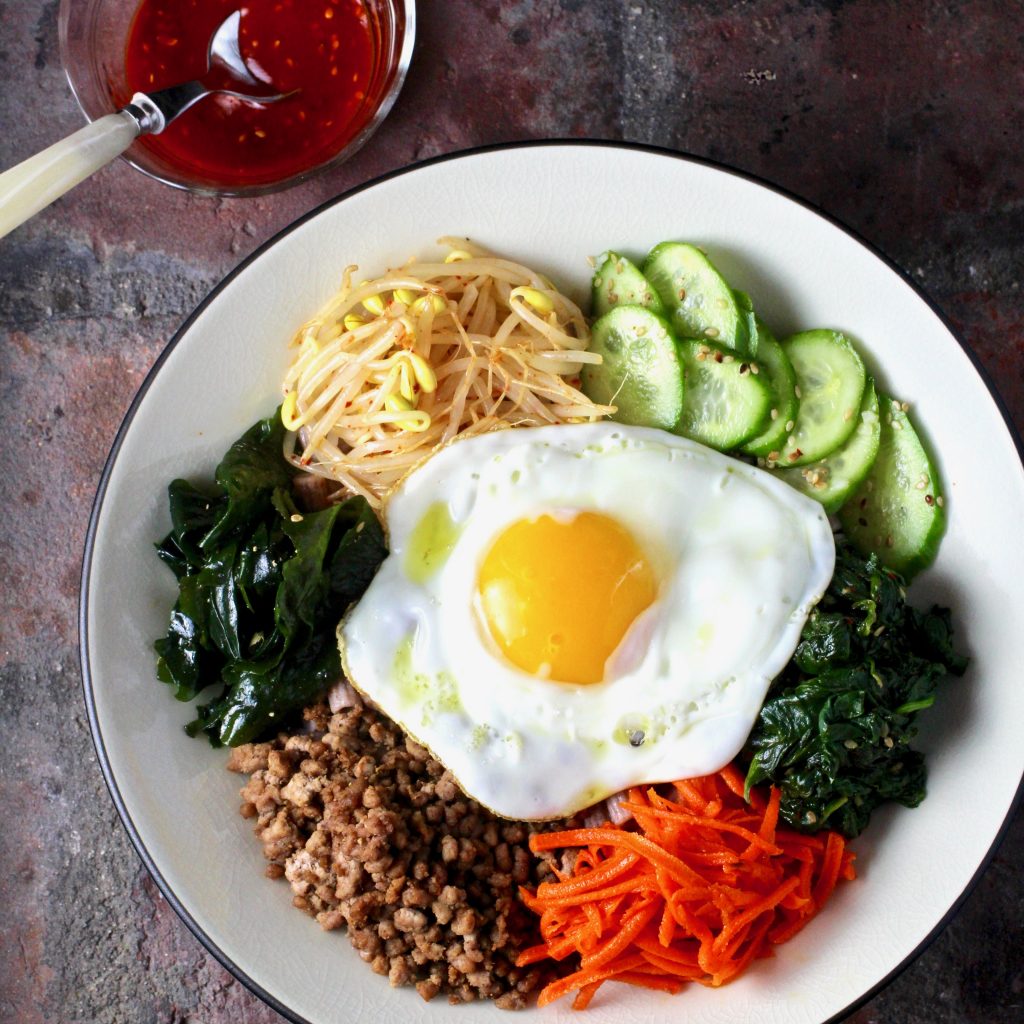
Red Rice Macaroni Bibimbap
Seasoned Vegetables and Beef
Fried Egg, Gochujang Sauce
I struggled to come up with a name for this dish. Traditional Bibimbap is a super-popular Korean dish where seasoned vegetables and beef are neatly arranged over cooked rice, often topped with a fried egg and served with red chili sauce. Just before eating, the diner vigorously mixes it all together creating a wildly colorful, nutritious, and immensely flavorful meal in a bowl.
The Korean word Bibim translates to mixing. Bap translates to cooked rice. Myeon translates to noodles. Since I’ve substituted red rice macaroni for steamed white rice…should the name be bibimmacaroni? bibimmac? bibimmyeon? Ultimately I decided on the name Macaroni Bibimbap because it is made with rice-based macaroni, hoping that is not too confusing.
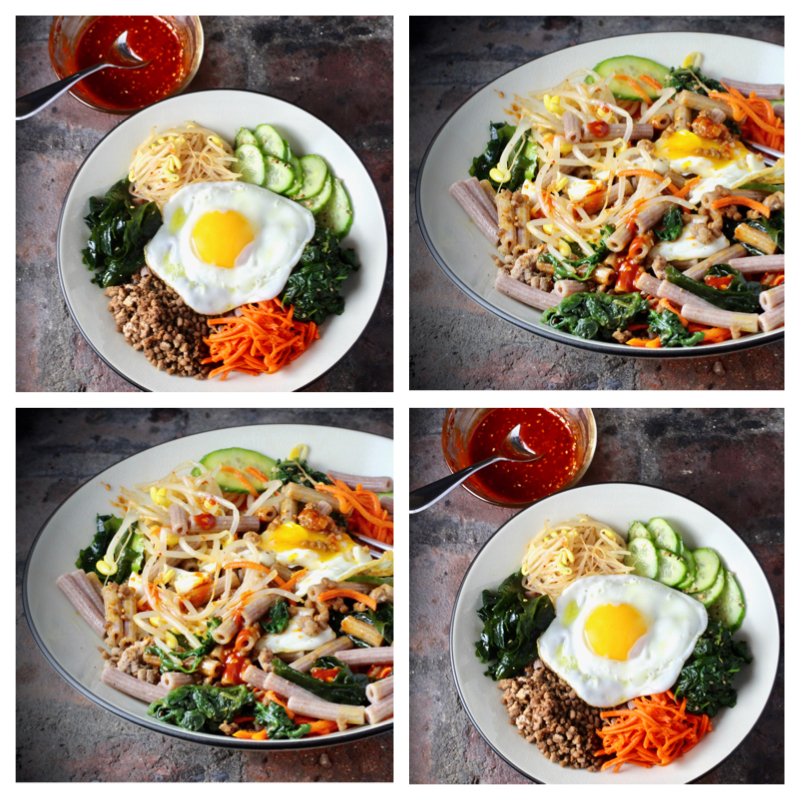
Made in Italy by my friends at Explore Cuisine of organic rice flour and pea protein, Red Rice Macaroni is loaded with 11 grams of protein per serving. With a chewy al dente texture, unique shape and color, it makes for a fun fusion twist on the traditional Korean recipe.
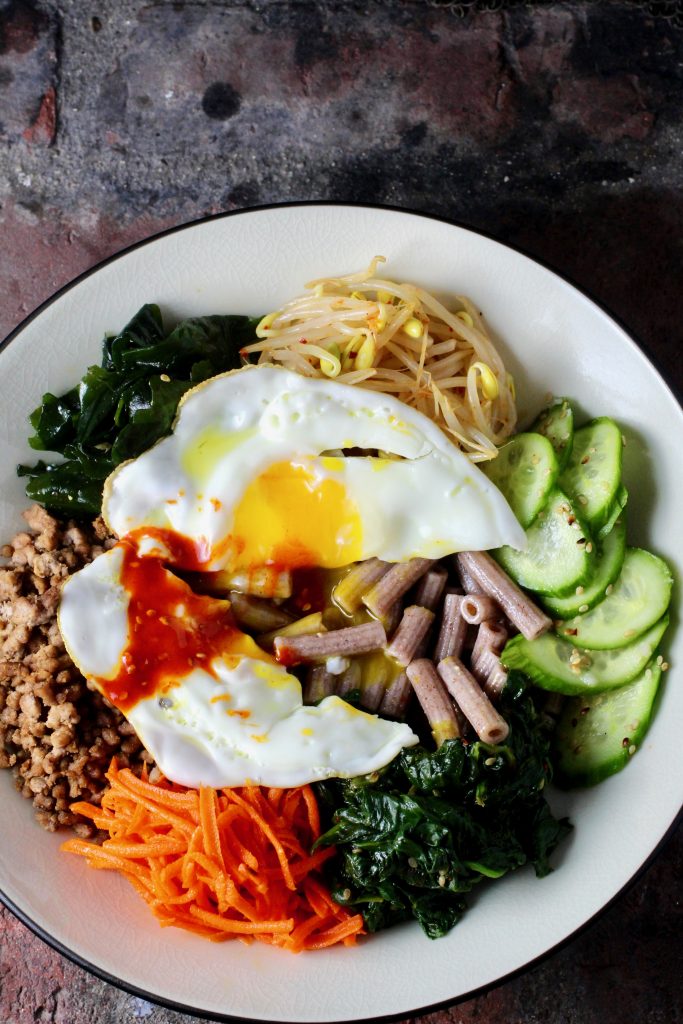
Red Rice Macaroni Bibimbap Recipe
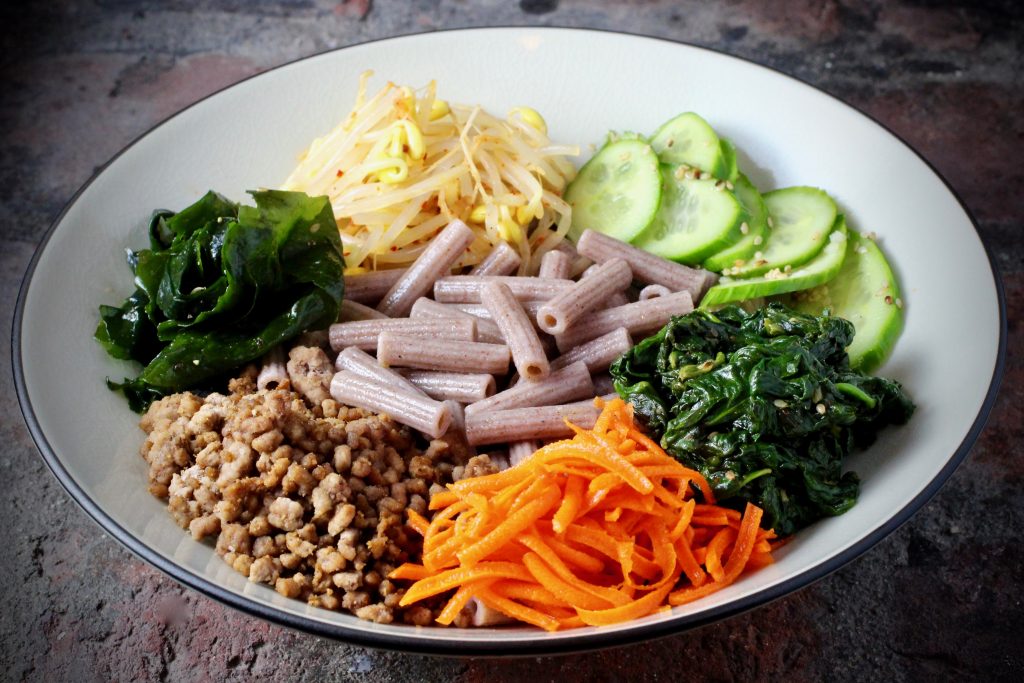
Serves 4
Ingredients:
Cucumber
- ¼ c. rice vinegar
- 2 T. water
- 2 t. sugar
- ½ t. kosher salt
- 1 clove garlic, minced
- 1 t. sesame seeds
- 2 small cucumbers, thinly sliced
Combine all ingredients except cucumber, stir to dissolve sugar and salt. Add cucumber and set aside to marinate.
Carrot
- 1 large carrot
- 2 t. olive oil
- salt to taste
- pinch of sugar
Grate carrot. Season with olive oil, salt and sugar.
Seaweed
- 1 c. wakame seaweed, rehydrated, squeezed dry
- 1 t. sesame oil
- 1 t. soy sauce (or gluten-free tamari)
- 1 t. rice vinegar
- 1 t. sesame seeds
Season seaweed with sesame oil, soy sauce, rice vinegar, and sesame seeds.
Soybean Sprouts
- 1 c. soybean sprouts
- 2 t. sesame oil
- ½ t. gochugaru (Korean red chili pepper powder)
- salt to taste
Blanch sprouts in boiling water for three minutes, then rinse with cold water. Drain well. Season with sesame oil, gochugaru, and salt.
Spinach
- 1 lb. fresh spinach
- 2 t. olive oil
- 2 garlic cloves, minced
- 1 t. sesame oil
- 1 t. sesame seeds
- ½ t. gochugaru (Korean red chili pepper powder)
- salt to taste
Heat olive oil in a sauté pan. Cook garlic in oil for one minute, then add spinach. Cook spinach stirring frequently until it is cooked down. Season spinach with sesame oil, sesame seeds, gochugaru, and salt.
Ground Beef
- ½ lb. extra lean ground beef
- 2 t. soy sauce (or gluten-free tamari)
- 1 t. sesame oil
- salt and fresh ground black pepper to taste
Brown the beef. Season with soy sauce, sesame oil, salt and pepper.
Gochujang Sauce
- ¼ c. gochujang (Korean red chili pepper paste)
- 2 T. rice vinegar
- 1 T. soy sauce (or gluten-free tamari)
- 1 clove garlic, minced
- 1 t. sesame oil
- 1 t. sugar or honey
- 1 t. sesame seeds
Combine all ingredients in a small bowl.
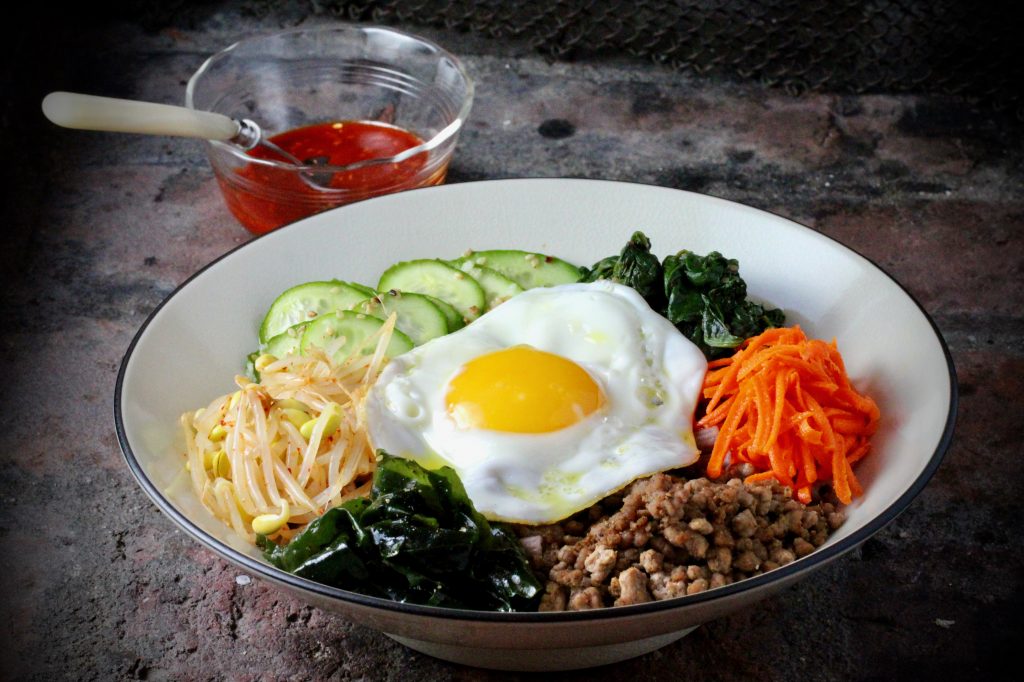
Macaroni Bibimbap
- 1 box Explore Cuisine Red Rice Macaroni
- 4 eggs
- olive oil to cook eggs
Cook macaroni according to package instructions. Rinse macaroni briefly in cool water and drain well. Macaroni should be slightly warm. Divide macaroni among 4 shallow bowls. Arrange seasoned vegetables and beef around the perimeter. Place a fried egg in the center (a runny yolk is a must). Serve with gochujang sauce.
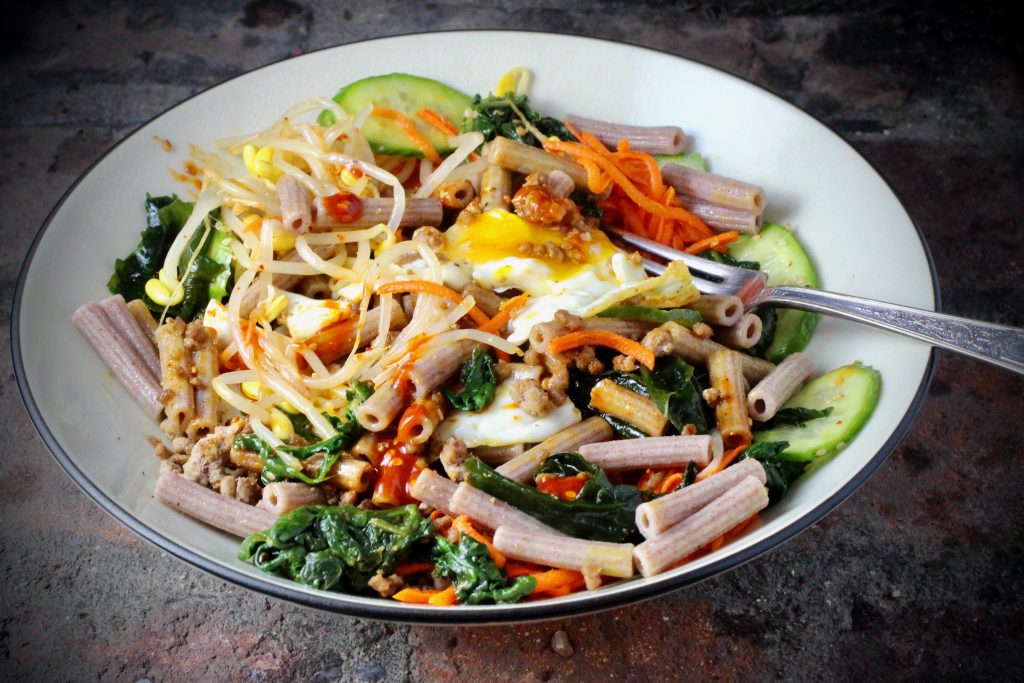
Instruct diners to mix it all up. The egg yolk and gochujang create the sauce for the macaroni. Commonly mixed with chopsticks and eaten with a spoon in Korea, we use a fork due to the shape of macaroni.
More Mixed Noodles
Korean Mixed Cold Noodles with Crab & Asparagus
(Bibim Naengmyeon)
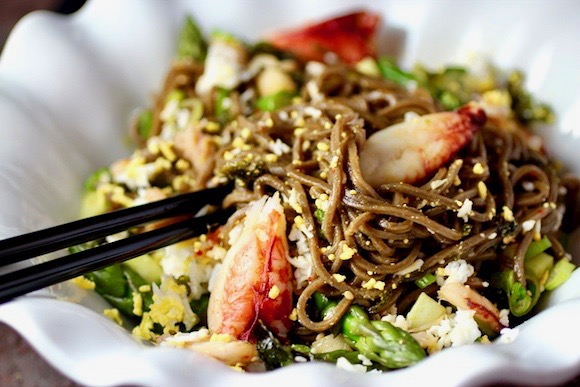
As the weather warms, we’re looking forward to cooler dishes. Bibim naengmyeon is a Korean spicy cold buckwheat noodle dish typically served with cucumber, radish, and hard boiled egg. Sometimes sliced beef and Korean pear are added. To celebrate springtime, I’m making my bibim (mixed) naeng (cold) myeon (noodle) with asparagus and Dungeness crab (recipe here).
Sponsored by Explore Cuisine.
